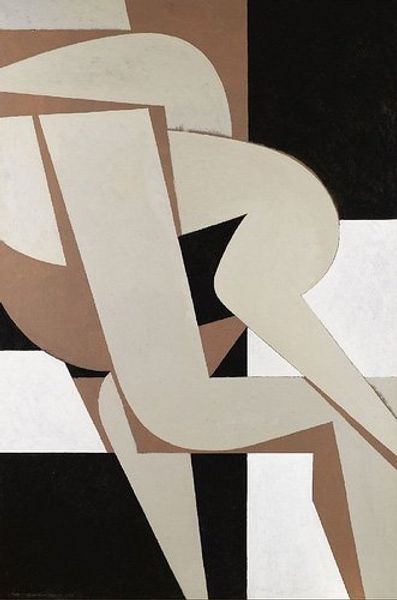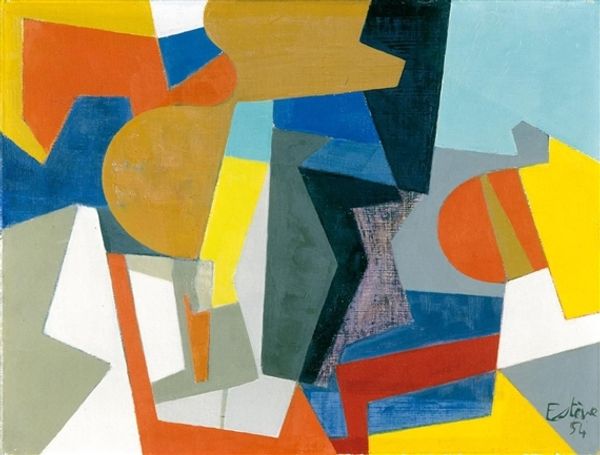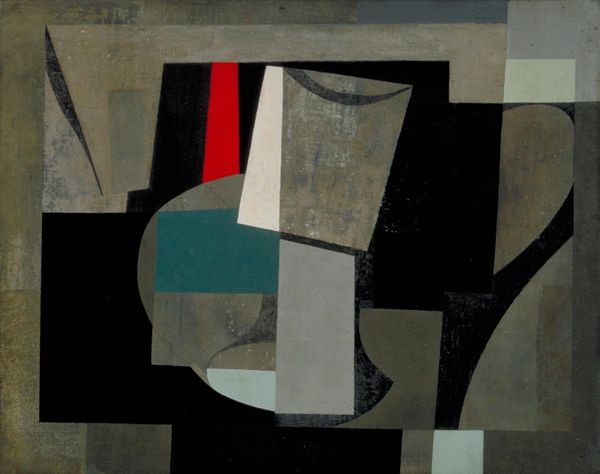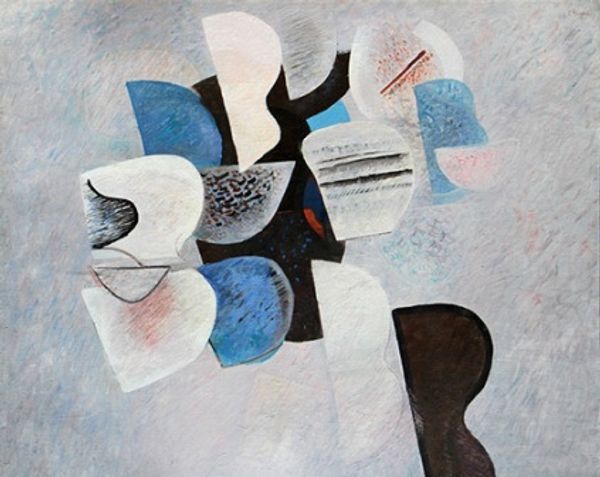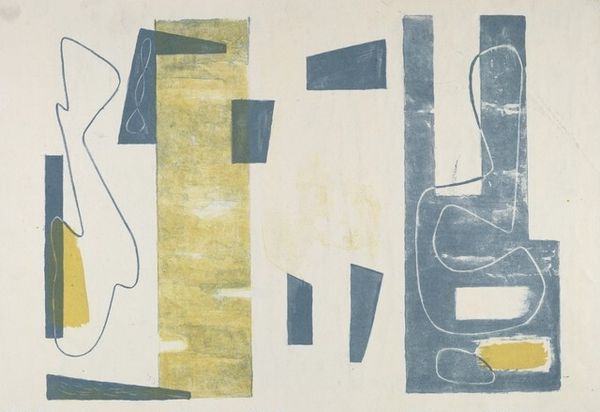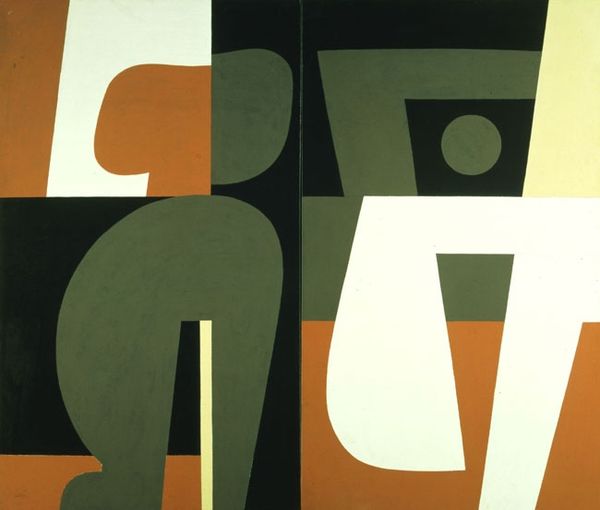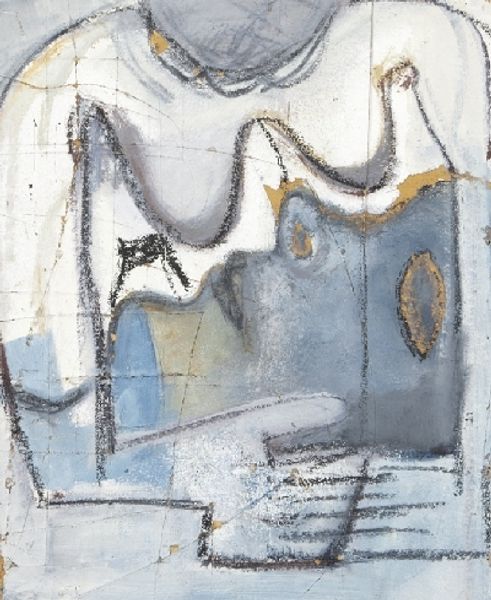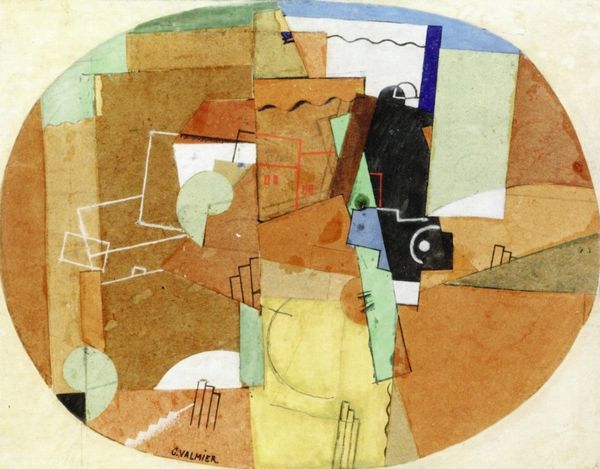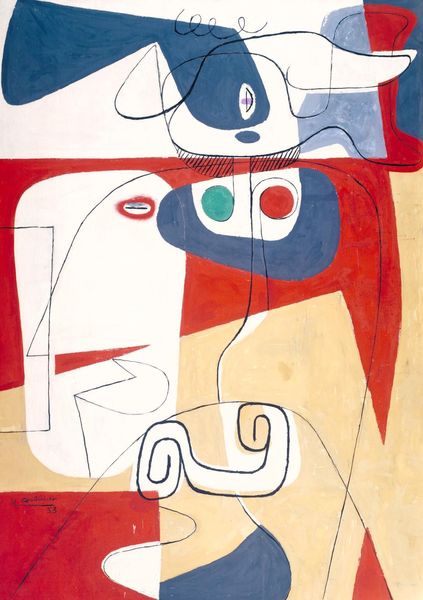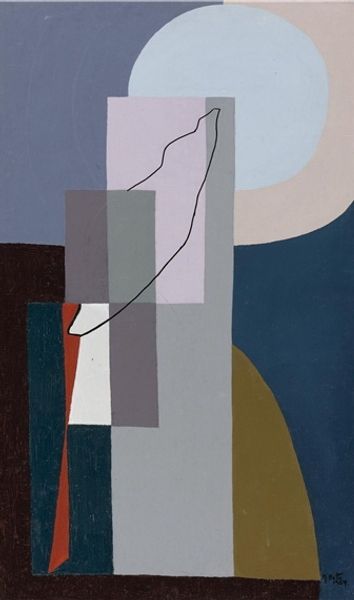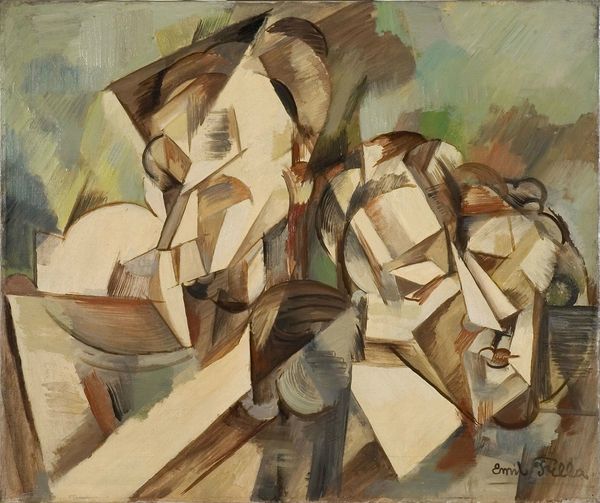
Dimensions: support: 1220 x 2135 x 3 mm
Copyright: © Angela Verren Taunt 2014. All rights reserved, DACS | CC-BY-NC-ND 4.0 DEED, Photo: Tate
Editor: This is Ben Nicholson’s "August 1956 (Val d’Orcia)", a large oil and pencil on board piece. It has a textured surface and abstract shapes. What do you see in this artwork? Curator: I see an exploration of material transformation. Nicholson's use of oil paint and pencil creates a tension between the industrial production of these materials and the artist's hand. Look at the labor-intensive process of building up these textures, almost like a topography. What does that suggest to you in relation to the 'Val d'Orcia'? Editor: Maybe it's about how we change the land through farming and industry? Curator: Precisely. It highlights our constant reshaping and consumption of the environment, and how artistic materials themselves are a product of that relationship. Editor: This reframes how I see landscape art; it is not just a pretty picture, but a statement about production.
Comments
tate 6 months ago
⋮
http://www.tate.org.uk/art/artworks/nicholson-august-1956-val-dorcia-t00742
Join the conversation
Join millions of artists and users on Artera today and experience the ultimate creative platform.
tate 6 months ago
⋮
In the 1930s Ben Nicholson was a leading figure in abstract non-representational art. During the 1950s he largely returned to still-life and landscape motifs, using flat planesof thinly painted colour to activate the composition. For the artist and critic Patrick Heron this approach appeared by the mid-1950s to be ‘too clinically precise’. He claimed to prefer an expressive ‘space-creating’ handling of paint over the ‘smooth, cold, clear, hard’ application of paint in Nicholson’s work. Gallery label, April 2019
